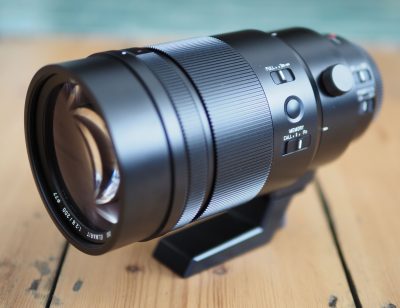Leica 200mm f2.8 review
-
-
Written by Gordon Laing
In depth
The Leica DG Elmarit 200mm f2.8 Power OIS (H-ES200) is a high-end telephoto prime lens designed for the Micro Four Thirds system. Mounted on a Panasonic or Olympus mirrorless body, it delivers equivalent coverage of 400mm, or 560mm when coupled with the 1.4x tele-converter supplied with it.
Announced in November 2017, the DG 200mm f2.8 is the eighth collaboration between Leica and Panasonic for the Micro Four Thirds system, following the earlier 8-18mm, 100-400mm, 12mm f1.4, 15mm f1.7, 42.5mm f1.2, 25mm f1.4 and 45mm f2.8 Macro lenses. Like those models, the DG 200mm f2.8 is designed and certified by Leica in Germany, and manufactured by Panasonic in Japan. As such it may not be ‘pure’ Leica, but the optical and build quality is of a very high standard.
The Leica DG 200mm f2.8 delivers a unique focal length in the Micro Four Thirds system, numerically slotting between the Olympus 75mm f1.8 and Olympus 300mm f4 for anyone who desires a telephoto prime lens. With the dedicated 1.4x tele-converter supplied in the box, the lens becomes a 280mm f4, making it a direct rival to the Olympus 300mm f4. Find out if this is the telephoto you’ve been waiting for in my review! Check prices on the Panasonic Leica 200mm f2.8 at Amazon, B&H, Adorama, or Wex. Alternatively get yourself a copy of my In Camera book or treat me to a coffee! Thanks!
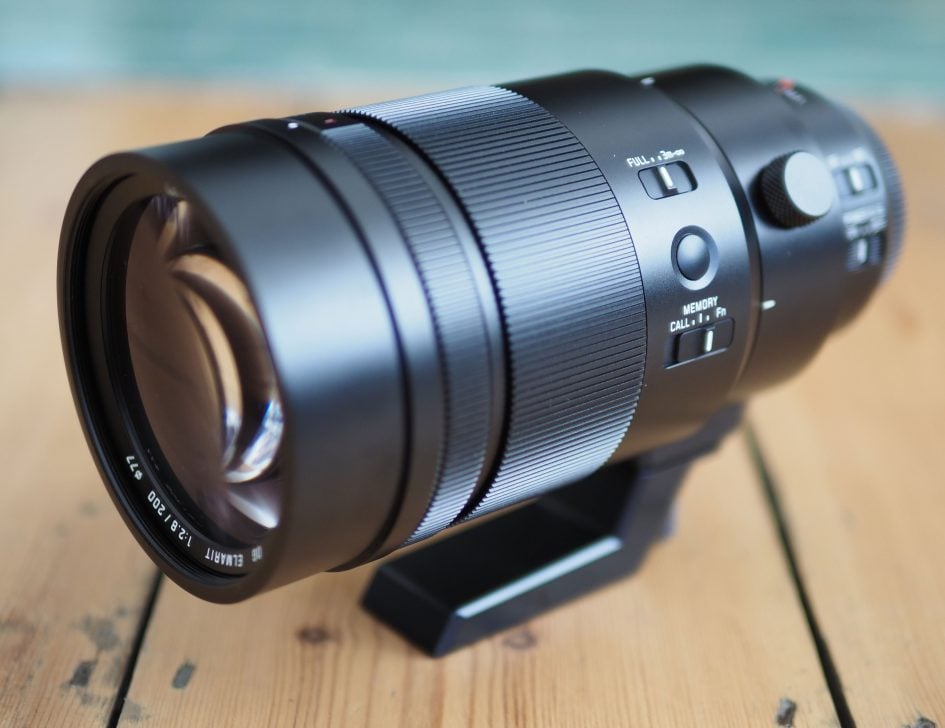
Leica DG 200mm f2.8 design and build quality
The Leica DG 200mm f2.8 shares a family resemblance with the earlier Panasonic / Leica collaborations with a smart-looking design, higher gloss finish and distinctive Leica font for labeling. Measuring 88mm in maximum diameter, 174mm in length and weighing 1245g / 44oz (all measurements excluding tripod foot and lens hood), it’s a substantial lens but par for the course for the specification.
Its closest rival is the Olympus 300mm f4 PRO which measures 93mm in diameter, 227mm in length and weighs 1270g (again without accessories, although in this instance the hood is built-in). So the Olympus is essentially the same weight, but a tad wider and about 5cm longer. So both lenses are in roughly the same ballpark in terms of size and weight, and even more so when you fit the supplied 1.4x tele-converter to the Leica 200mm f2.8. Generally speaking I could fit the 200mm plus a body in the same section of my bag as the 300mm alone.
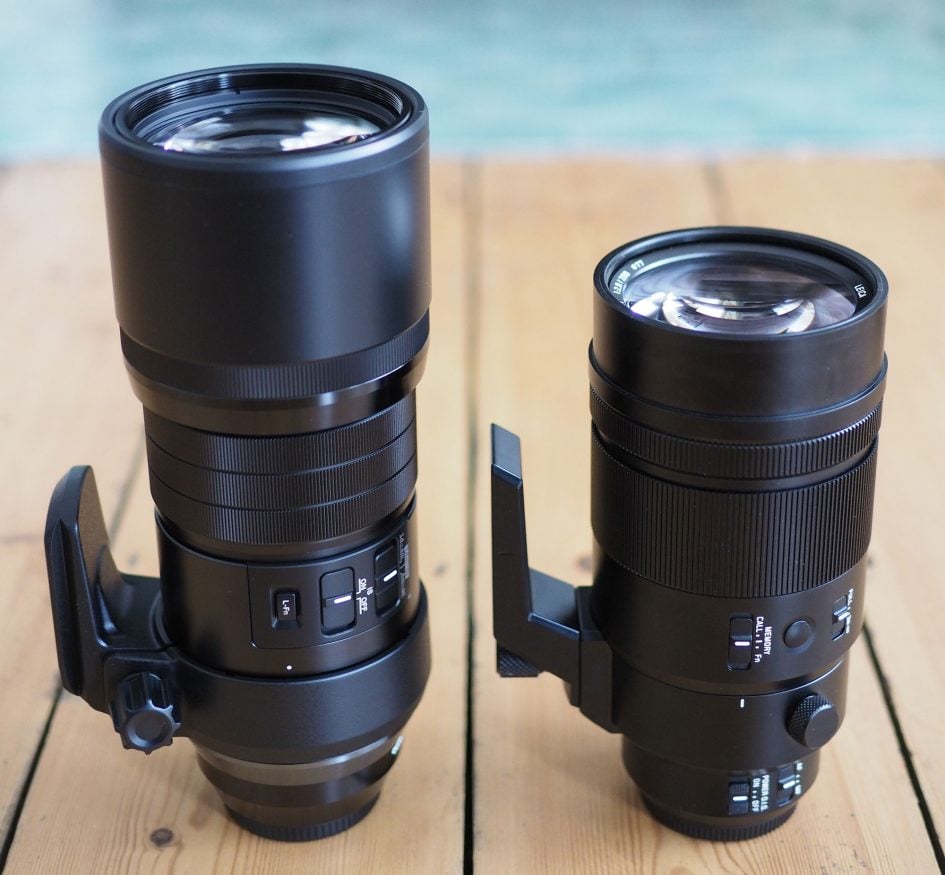
Above: Olympus 300mm f4 (left) and Leica 200mm (right), both with tripod feet mounted. Note Arca Swiss dovetail on the foot of the former.
The Leica DG 200mm f2.8 is supplied with a removeable tripod foot that screws into a rotating and lockable collar on the barrel, a long plastic lens hood that can be reversed over the barrel for transportation and which uses a screw to lock into place, and the afore-mentioned 1.4x tele-converter. I’ve pictured all three below. Note the 1.4x tele-converter is designed exclusively for the 200mm and I believe is not compatible with other lenses; an optional 2x tele-converter is also available.
Note the Olympus 300mm f4 PRO also comes with a removeable tripod foot although unlike the Leica’s, it features a built-in Arca Swiss dovetail, allowing it to mount on compatible clamps with no further accessories. Like the Olympus 40-150mm, the lens hood is also cleverly built-into the end of the barrel, extending by 5cm or retracting with a click. Both the Leica 200mm and Olympus 300mm lenses employ 77mm filter threads.
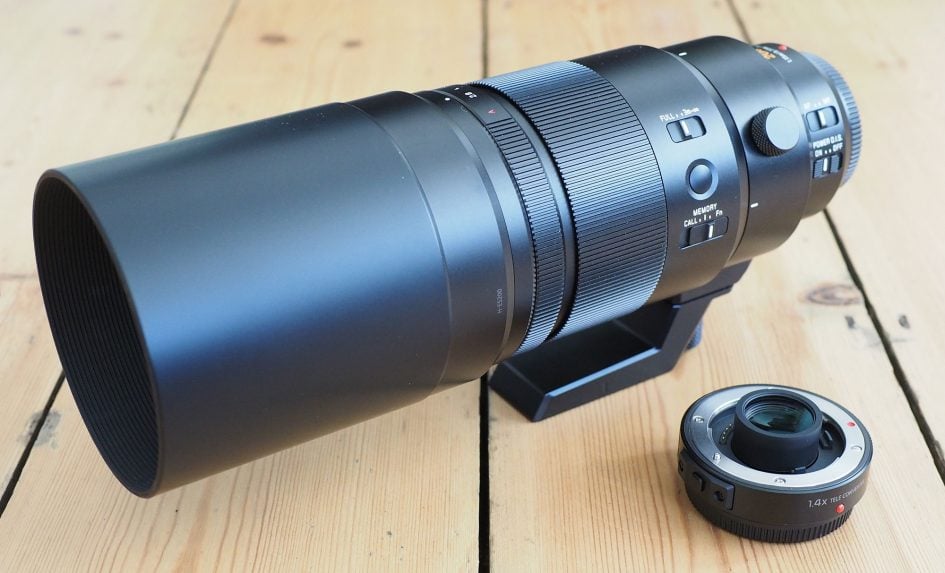
Moving onto build quality, the Leica DG 200mm shares a similar approach to the other recent collaborations between them and Panasonic. The barrel is smooth and solidly-assembled, and claims dust and splash-proof construction with a rubber grommet on the lens mount. The Olympus 300mm f4 PRO feels built to a similar level and also claims environmental sealing, again with a rubber grommet on the lens mount. To find out if one ends up being superior to the other in terms of sealing, we’ll simply have to wait for long-term field reports, but at least they’re both sealed at the lens mount.
If you’d like to manually focus, there’s a generous ring just over halfway along the barrel away from the mount. Like other native lenses in the Micro Four Thirds catalogue, the manual focusing employs a motorized fly-by-wire system where the ring can turn without end-stops; the faster you turn the ring, the greater the increments. To me, the focusing ring on the Leica DG 200mm felt very smooth and nicely damped while avoiding any scratchiness as it turned. The autofocus when mounted on the Lumix G9 performed so well I rarely needed to manually focus, but when shooting tiny insects at the closest focusing distance I found it was easy to adjust the focus manually with peaking and magnified assistance. Note the Olympus 300mm f4 PRO’s manual focusing ring does however sport a neat trick where pulling it back towards the camera sets it to a fully manual focus mode with distance markings and hard end-stops.
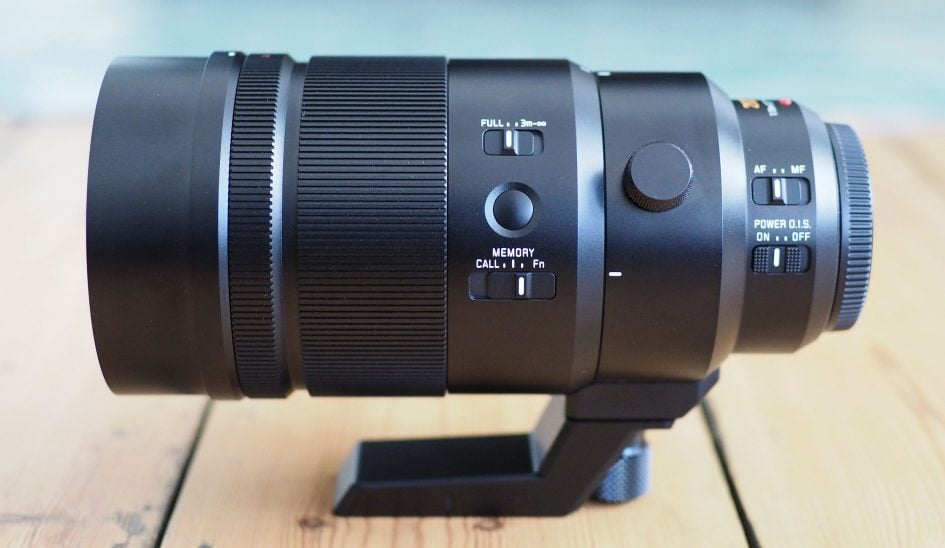
Towards the end of the barrel is a dedicated aperture ring, allowing you to manually select focal ratios from f2.8 to f22 in one third increments; there’s also an A position to allow the camera to control the aperture. Note the manual aperture selection will only work on Panasonic bodies, while on Olympus bodies you’ll be adjusting it using the camera controls.
By the lens mount are switches for AF / MF and Power OIS (either on or off), while towards the middle of the barrel you’ll find an autofocus limiter switch (the full range or from 3m to infinity). When mounted on a Lumix G9, I found the autofocus was very swift and quiet in operation, and rarely needed the focus limiter activated.
Below the focus limiter switch is a large function button accompanied by a switch to configure it. Set the switch to Fn and you can program the function of the barrel button from the menus of a compatible body – only the G9 initially, although a firmware update to the GH5 brings the option to this body too. The switch below the button also lets you program a fixed focusing distance that can be recalled at a later moment – you first set the switch to Memory before focusing to the desired spot, then set the switch to Call to instantly return to it with an AF command, like a half-press of the shutter release. If you’re a bird photographer you’ll immediately appreciate the usefulness of this to lock-in the distance to, say, a nest or a favourite fishing perch.
Leica DG 200mm f2.8 optical construction
In terms of optical construction, the Leica DG 200mm f2.8 employs 15 elements in 13 groups with two UED elements. The maximum focal ratio is f2.8, there’s nine diaphragm blades, and a closest focusing distance of 1.15m (for a maximum reproduction of 0.4x). The DG 200mm f2.8 is also supplied with a dedicated 1.4x tele-converter (designed to only work with this lens), that transforms the focal length to 280mm f4.
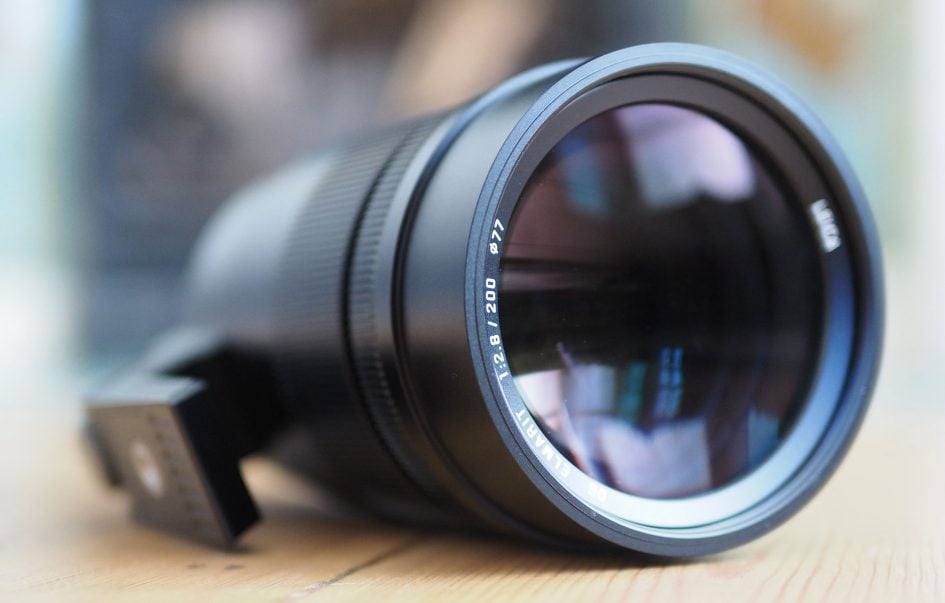
Mount the lens on a Panasonic or Olympus body and the sensor will reduce the effective field of view to 400mm without the converter attached, or 560mm with the converter. If you prefer longer reach, Panasonic also offers an optional 2x tele-converter, taking the lens to 400mm f5.6, or an 800mm equivalent field of view. While Olympus also offers a optional converter that works with the 300mm f4 PRO, I like that Panasonic has included one in the box with the DG 200mm and I personally prefer having the flexibility of 200mm at f2.8 or 280mm at f4, rather than extending and slowing-down a 300mm f4 native.
For the record, the Olympus 300mm f4 PRO employs 17 elements in ten groups, including three Super ED, three HR and one E-HR elements. Its maximum focal ratio is f4, there’s also nine diaphragm blades, and a closest focusing distance of 1.4m (with a 0.48x maximum reproduction).
To compare the coverage of the two lenses in practice, here’s shots taken with the Leica 200mm DG f2.8 and Olympus 300mm f4 from the same distance, and it’s clear how the 50% greater focal length of the latter allows it to get much closer. If you started with a 20 Megapixel image, as I did here, you’d need to crop the Leica down to 9 Megapixels to deliver the same field-of-view.

Above left: Leica 200mm at 400mm equivalent. Above right: Olympus 300mm at 600mm equivalent.
Fit the supplied 1.4x teleconverter to the Leica though and it grows much closer to the Olympus in focal length. Here’s how the pair look at 280mm and 300mm. This time you’d only need to crop-down to 18 Megapixels to match the coverage.

Above left: Leica 200mm plus 1.4x TC at 560mm equivalent. Above right: Olympus 300mm at 600mm equivalent.
Both the Leica 200mm f2.8 and Olympus 300mm f4 employ optical stabilisation that iron-out the wobbles on bodies without sensor-shift stabilisation; these systems work whether you mount them on Panasonic or Olympus bodies. Both lenses also support enhanced stabilisation that can exploit sensor-shift systems simultaneously, but only if the body and lens comes from the same manufacturer. So to enjoy Dual IS 2 on the Leica 200mm f2.8, you’ll need to mount it on a compatible Lumix G body, like the G9 or GH5. If you’d like Sync IS on the Olympus 300mm f4, then you’ll need to mount it on an Olympus body, although it does at least work with all of them.
At the time of comparing the Leica 200mm f2.8 against the Olympus 300mm f4, I had a Panasonic Lumix G9 body so took the opportunity to try both lenses on it. As noted above, this meant the Leica 200mm could exploit Dual IS 2, whereas the Olympus lens was working with its own optical stabilisation only. To make the playing field a little more even, I tested the Leica 200mm with its 1.4x tele-converter mounted, so it was working at 280mm.
As always I took a series of photos with and without stabilisation at progressively slower shutter speeds, one stop apart, until I could no longer handhold a sharp result. With the Leica 200mm and 1.4x tele-converter working at an equivalent of 560mm, I required a shutter speed of 1/500 to ensure a crisp result without stabilisation. With Dual IS 2 enabled, I could achieve the same result at 1/125 and an almost perfect one at 1/60, representing two to three stops of compensation. I should however add the results at 1/30, 1/15 and even 1/8 were pretty good, just not completely sharp.

Above: Leica 200mm plus 1.4x teleconverter at 560mm equivalent and 1/60. 100% crops without and with Dual IS 2 stabilisation.
Switching to the Olympus 300mm f4 on the G9 where it was working at an equivalent of 600mm, I managed a sharp result without stabilisation at 1/500 or 1/250. With optical stabilisation enabled, I could achieve the same result at 1/125, representing one or two stops of compensation, although the results down to 1/15 were still very respectable, indeed more so than the Leica 200mm and 1.4x TC at the same shutter speeds. Here’s crops from the Olympus 300mm on the G9 at 1/60.

Above: Olympus 300mm at 600mm equivalent and 1/60. 100% crops without and with optical stabilisation.
As noted earlier, both lenses continued to deliver pretty good results at even slower shutter speeds, but which was better? Here’s 100% crops from both lenses at 1/15, the Leica exploiting Dual IS 2, while the Olympus was using its optical stabilisation alone. It’s clear the Olympus has done a better job at 1/15, even when it wasn’t able to exploit the additional help of body-based stabilisation. Mount it on an Olympus body and you’ll be able to achieve even better results with Sync IS.

Above left: Leica 200mm plus 1.4x teleconverter at 560mm equivalent. Above right: Olympus 300mm at 600mm equivalent. Both 100% crops with stabilisation at 1/15
So in my own tests I’d say when using a Dual IS 2 compatible body from Panasonic, the Leica 200mm f2.8 unsurprisingly enjoyed the edge (albeit only slight), but if you were less critical of the results then the Olympus actually took the lead at slower speeds. And once again if you’re using an Olympus body, I’d expect the Olympus 300mm f4 to stride ahead. Indeed if stabilisation is critical to your use of these big lenses, then the choice between them will be greatly influenced by which body you’ll be mounting them on.
I’ll just end this section with a handheld video I filmed with the Leica 200mm f2.8 on the Lumix G9 body, utilising Dual IS 2. The combination has done a good job here at ironing-out the wobbles for video use, although I also used the G9 to capture video at 60p and slow it to 30p to smooth it even more.
Above: Download the original file (Registered members of Vimeo only).
Leica DG 200mm f2.8 in-use
In terms of composition, an equivalent focal length of 400mm sounds very long and best-suited to photographing distant sports or wildlife, but I’m also fond of using it around town for urban landscapes. Here’s three shots with the 200mm showing how you can use it for tighter views.

Above: Leica DG 200mm f2.8 on Lumix G9
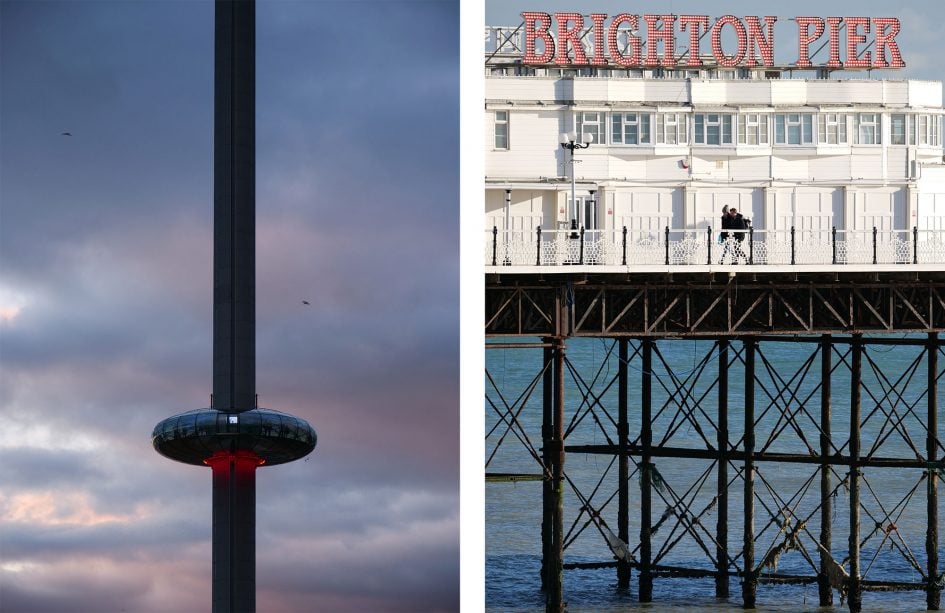
Above: Leica DG 200mm f2.8 on Lumix G9
Deploy the tele-converter and you can have even more fun with tight framing. To illustrate this, here’s a shot I took of Brighton’s old Pier with the Leica 12-60mm at 60mm for a 120mm equivalent field of view. You can see I’ve captured the entire structure, but none of its fine detail, or what’s going on in the sky behind it.

Above: Leica DG 12-60mm at 60mm on Lumix G9
After taking the shot above, I headed down to the beach for a lower angle and switched to the 200mm with the 1.4x tele-converter for an equivalent of 560mm. With a field of view that’s almost five times tighter than the shot above you can resolve the dots in the sky as individual birds flocking in their nightly murmuration.

Above: Leica DG 200mm f2.8 and 1.4x tele-converter on Lumix G9
Both the Leica DG 200mm f2.8 and Olympus 300mm f4 PRO offer optical stabilisation that provides around four stops of compensation on either Panasonic or Olympus bodies, but if you want to exploit body and optical stabilisation simultaneously for the greatest compensation of around six stops, you’ll need to match the lens to the manufacturer’s own body. This means mounting the Leica DG 200mm f2.8 on a recent Panasonic Lumix G body to unlock Dual IS II, or mounting the Olympus 300mm f4 PRO on a compatible Olympus OMD (or PEN if you don’t mind the tiny body) to unlock Sync IS. I wish Panasonic and Olympus would make their hybrid stabilisation systems compatible as having access to an extra two stops or so really can make the difference between a shaky and a usuable image when light levels drop.
Here’s an example where I managed to handhold sharp images during a night game drive at shutter speeds as low as 1/15. This was only possible on the Leica DG 200mm f2.8 when I had it mounted on a compatible Panasonic Lumix G body, in this case, a Lumix G9. Considering I’d normally need over 1/400 to handhold 400mm equivalent without shake, being able to do this at 1/15 represents around five stops of compensation.
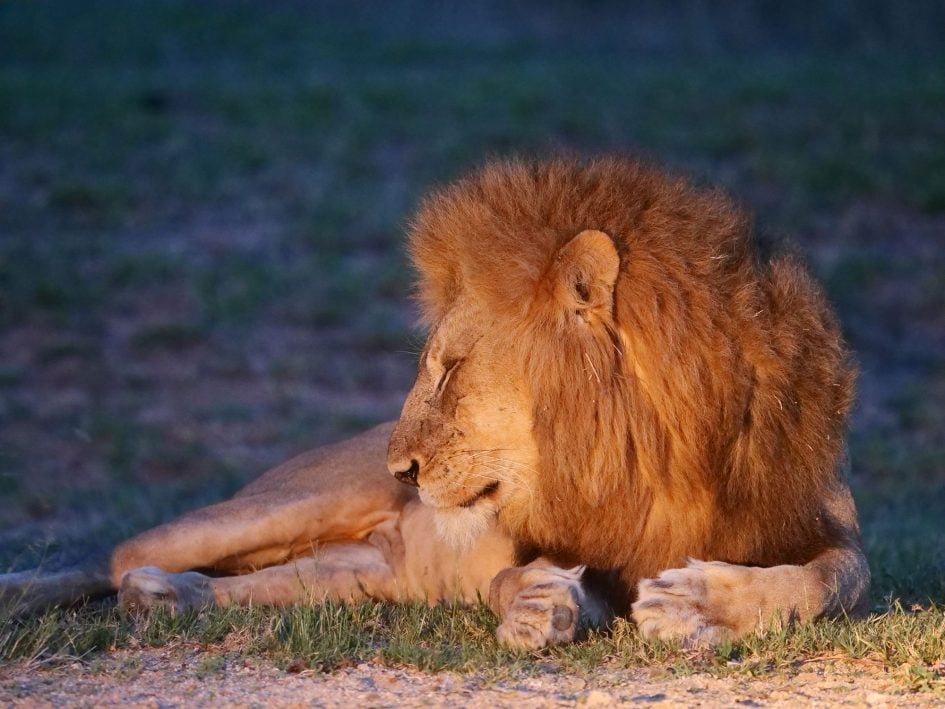
Above: Leica DG 200mm f2.8 on Lumix G9. Handheld at 1/15.
While the long focal length will get you close to faraway subjects, the minimum focusing distance will also let you get close to small ones too. Indeed I found myself frequently exploiting this capability to photograph small creatures, even insects at times. Both of the following images were take at or close to the minimum distance of just over 1m.
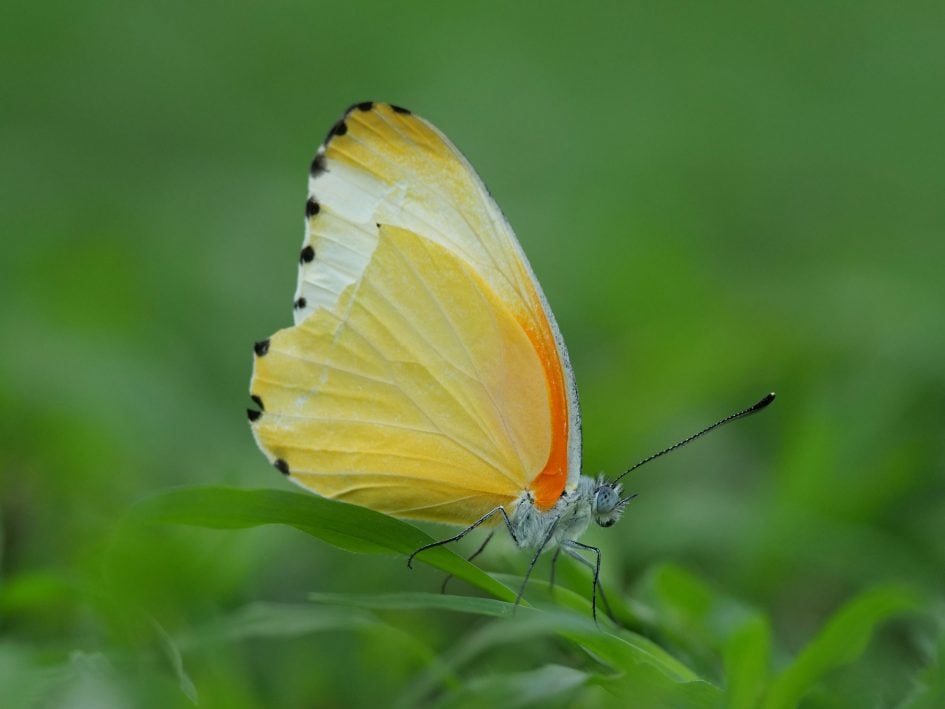
Above: Leica DG 200mm f2.8 at closest focusing distance on Lumix G9

Above: Leica DG 200mm f2.8 near to closest focusing distance on Lumix G9
An equivalent focal length of 400mm is a bit tight for traditional portraits, but if you can step back far enough, it’ll deliver great results with significant blurring in the background. Here’s some examples.
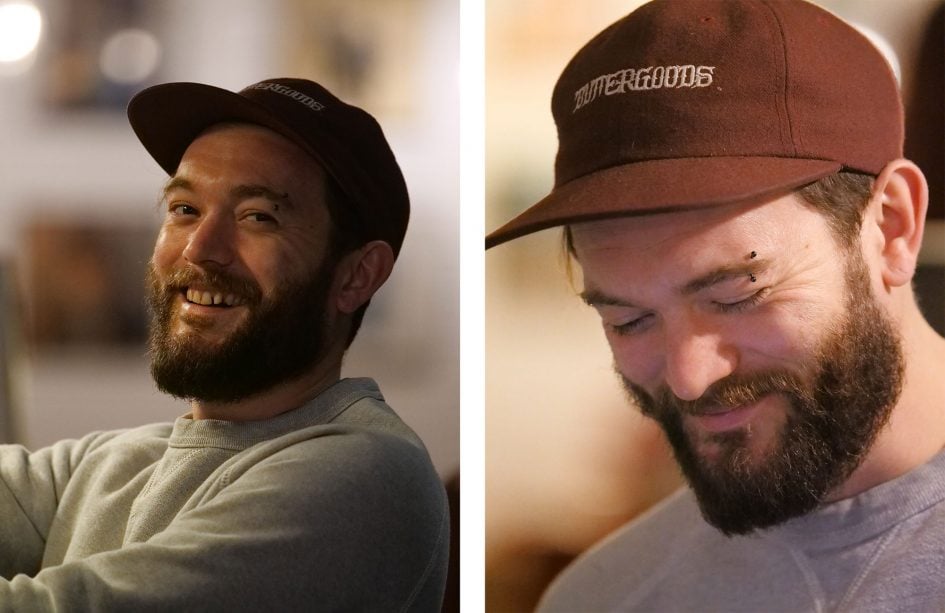
Above: Joe photographed inside Bond Street Coffee in Brighton. He makes a mean cup of, er, Joe!

Above: Leica 200mm at f2.8 on Lumix G9

Above: festive window shopping with the Leica 200mm f2.8 on a Lumix G9. Note the large bokeh blobs thanks to the long focal length.

Above: here’s another example of bokeh blobs with the Leica DG 200mm at f2.8.
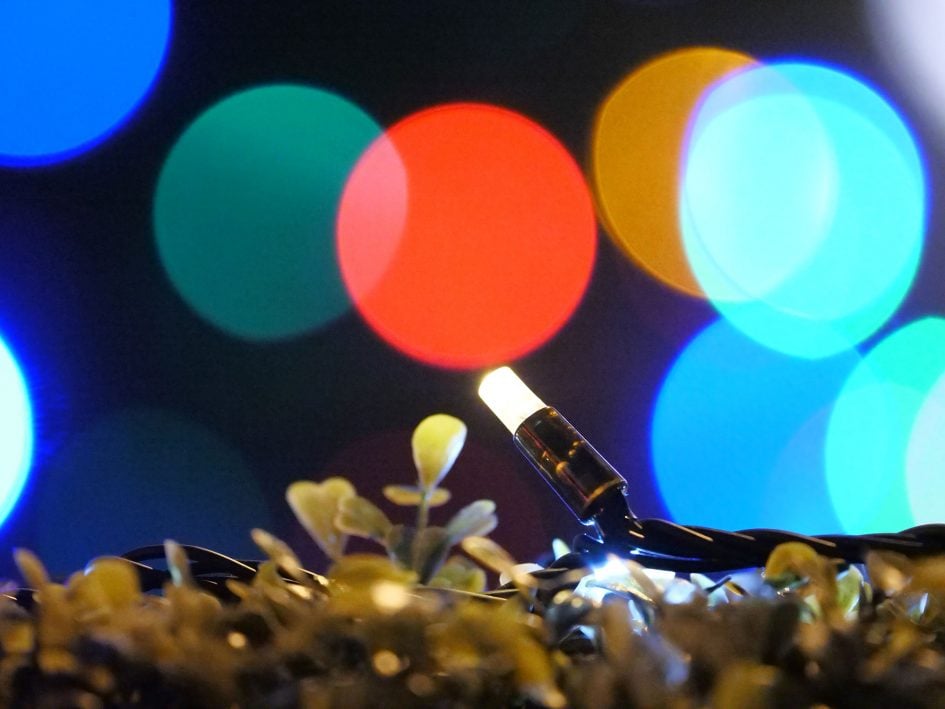
Above: maximum bokeh blobs with the Leica DG 200mm f2.8 at its closest focusing distance.
Here’s another set of comparisons taken with the Leica 200mm at its closest focusing distance. This time I’ve compared different apertures without, then with the supplied 1.4x TC mounted, then followed them with a comparison of the Leica 200mm (without and with the 1.4x TC) and the Olympus 300mm, all at their maximum apertures.
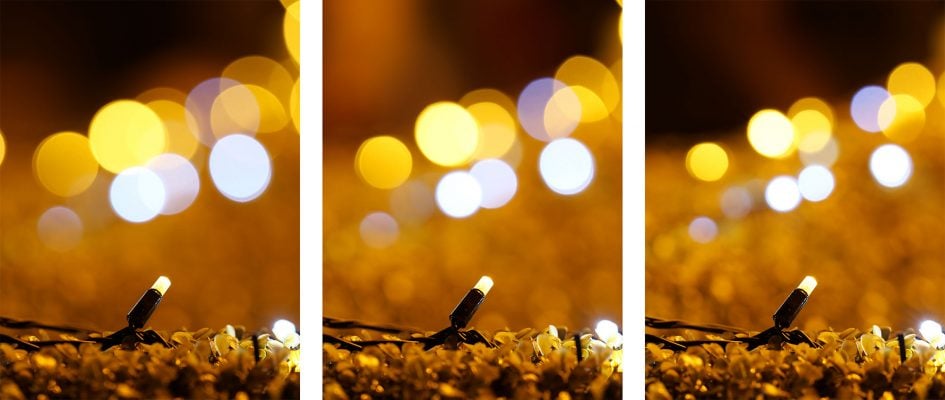
Above: Leica 200mm at f2.8 (left), f4 (middle) and f5.6 (right). Full image at minimum focusing distance for maximum bokeh balls. As the aperture’s closed, the blobs of course become smaller, but they remain nicely rounded and the rendering avoids looking busy.
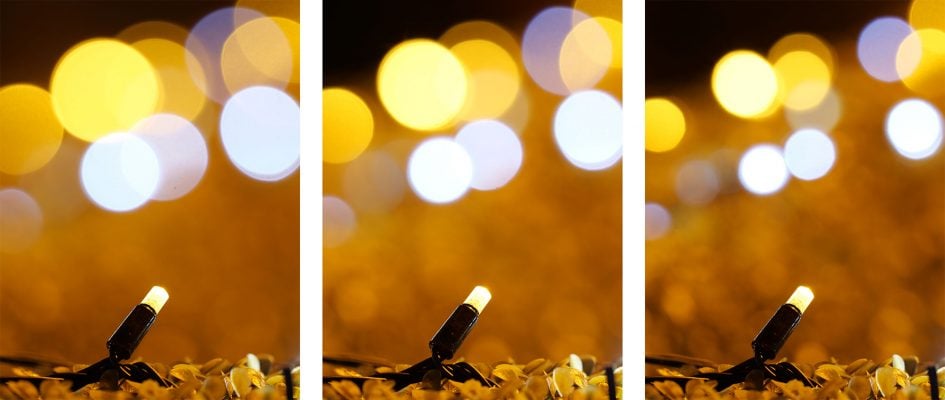
Above: Leica 200mm with 1.4x teleconverter at f2.8 / f4 equiv (left), f4 / f5.6 equiv (middle) and f5.6 / f8 equiv (right). Full image at minimum focusing distance for maximum bokeh balls. As the aperture’s closed, the blobs of course become smaller, but they remain nicely rounded and the rendering avoids looking busy even with the TC attached..
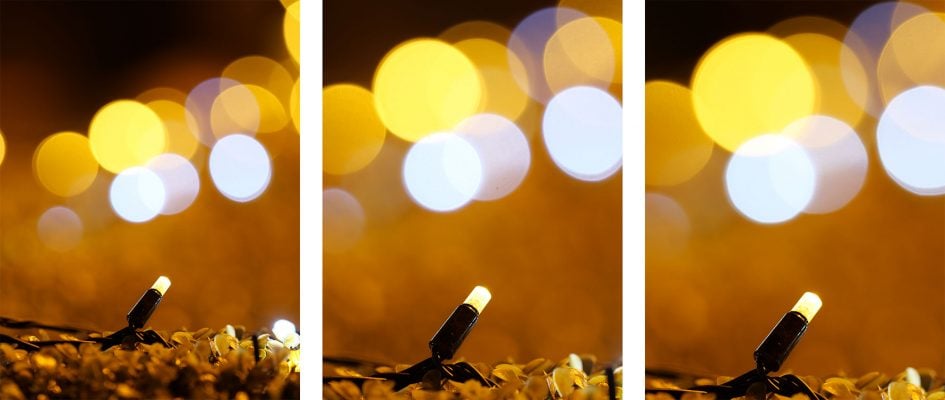
Above: Leica 200mm at f2.8 (left), Leica 200mm with 1.4x TC at f2.8 / f4 equiv (middle), and Olympus 300mm fat f4 (right). All at the same minimum focusing distance. Obviously as the focal length increases, the bokeh blobs increase in size, but their style and the overall rendering in the background looks quite similar across all three configurations here; certainly there’s negligible difference between the Leica 200mm with its TC compared to the Olympus 300mm above.
Next check out my quality and samples pages or skip to my verdict using the tabs at the top of the page!
Check prices on the Panasonic Leica 200mm f2.8 at Amazon, B&H, Adorama, or Wex. Alternatively get yourself a copy of my In Camera book or treat me to a coffee! Thanks!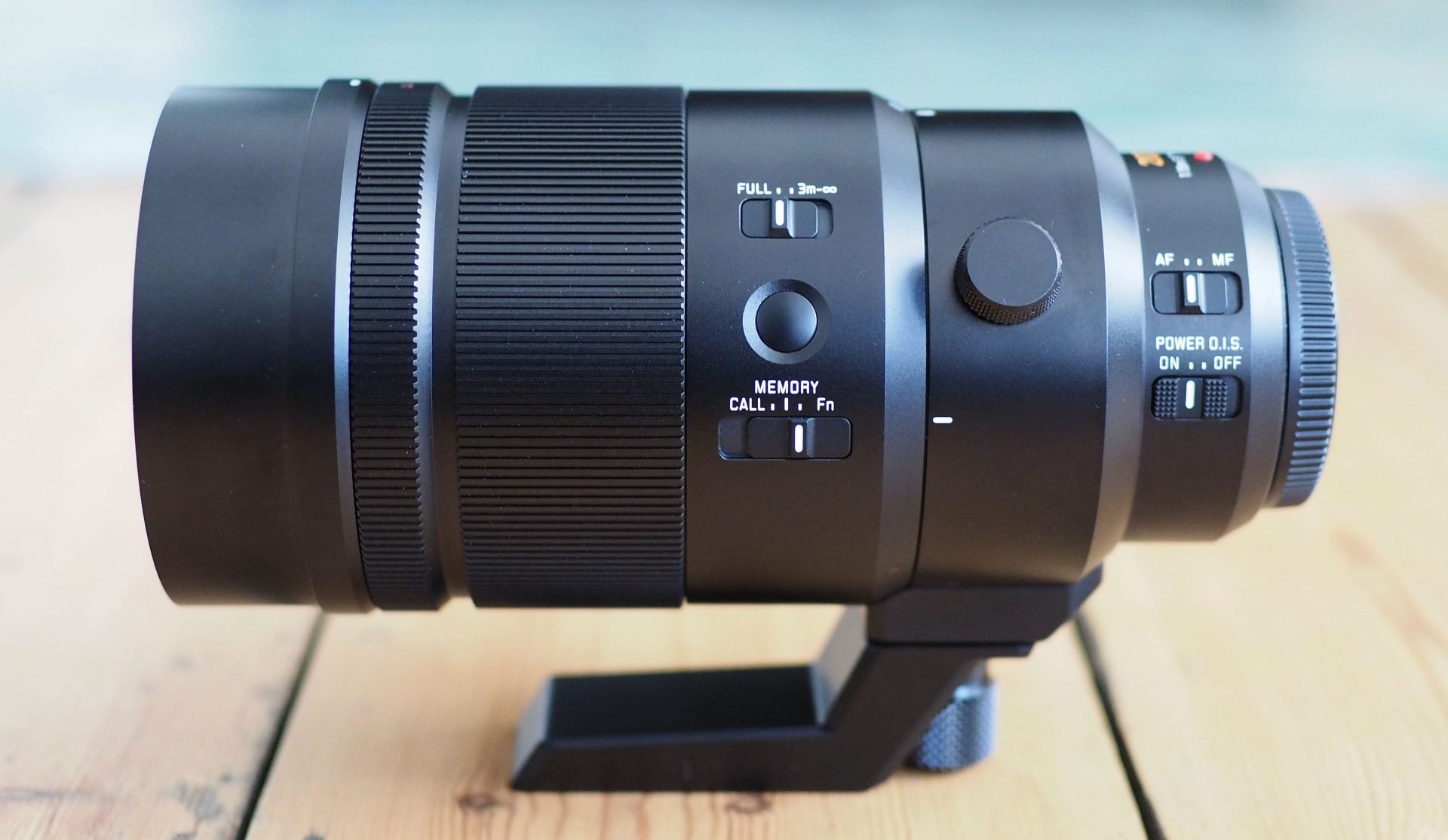
 The Leica DG 200mm f2.8 is an unashamedly high-end telephoto for Panasonic and Olympus mirrorless bodies, on which it delivers a 400mm equivalent reach. The optical quality for subjects near or far is excellent across the frame, even with the aperture wide-open, and the closest focusing distance of just over a meter allows impressive close-ups. Leica also softens the blow by including a 1.4x tele-converter which transforms the lens into a 280mm f4 / 560mm equivalent. This essentially matches the reach and aperture of the Olympus 300mm f4 and in my tests virtually matched its quality too. It's this flexibility as a 200mm f2.8 or 280mm f4 while maintaining the high standard that seals the deal for me. If your budget can stretch and you prefer the 200 / 280mm focal lengths over 300mm, it's a superb addition to your system. But bear in mind the Leica 100-400mm or Olympus 40-150mm f2.8 zooms are roughly half the price.
The Leica DG 200mm f2.8 is an unashamedly high-end telephoto for Panasonic and Olympus mirrorless bodies, on which it delivers a 400mm equivalent reach. The optical quality for subjects near or far is excellent across the frame, even with the aperture wide-open, and the closest focusing distance of just over a meter allows impressive close-ups. Leica also softens the blow by including a 1.4x tele-converter which transforms the lens into a 280mm f4 / 560mm equivalent. This essentially matches the reach and aperture of the Olympus 300mm f4 and in my tests virtually matched its quality too. It's this flexibility as a 200mm f2.8 or 280mm f4 while maintaining the high standard that seals the deal for me. If your budget can stretch and you prefer the 200 / 280mm focal lengths over 300mm, it's a superb addition to your system. But bear in mind the Leica 100-400mm or Olympus 40-150mm f2.8 zooms are roughly half the price.



